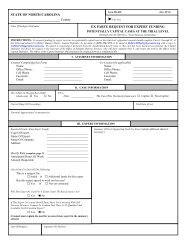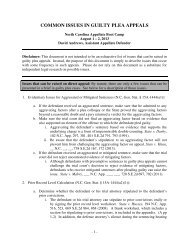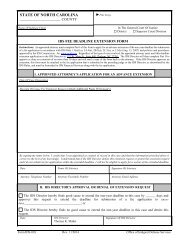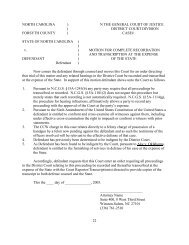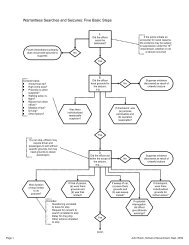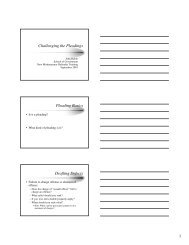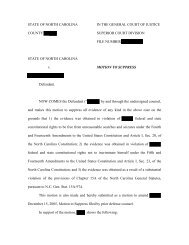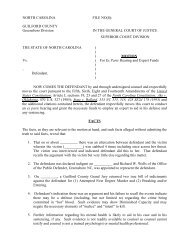a Ten-Step Guide to CLOSING ARGUMENT
a Ten-Step Guide to CLOSING ARGUMENT
a Ten-Step Guide to CLOSING ARGUMENT
- No tags were found...
You also want an ePaper? Increase the reach of your titles
YUMPU automatically turns print PDFs into web optimized ePapers that Google loves.
file:///H|/PUBLIC/Defender Training/Trial School/2006/Materials/15 Closing Argument -- Kelly.htmthe entire production the first time they make an appearance!STEP THREE: DEVELOP A COMPLETE <strong>ARGUMENT</strong> WITHIN EACH CHAPTEREvery chapter must have a beginning, a middle, and an end:1. In the beginning, tell your listeners what your point is.In other words, tell them what you're going <strong>to</strong> tell them.2. In the middle, discuss each piece of evidence that supports your point, using <strong>to</strong> your advantage thegood facts and neutralizing as best you can the negative ones.In other words, tell them.3. At the end, repeat the overall point you are trying <strong>to</strong> make, highlighting its connection <strong>to</strong> the verdictyou seek. In other words, tell them not only what you <strong>to</strong>ld them but why you <strong>to</strong>ld them. Don't just set outthe facts and fail <strong>to</strong> articulate the significance of those facts <strong>to</strong> your theory of the case. The close of eachblock of your argument is often an ideal place <strong>to</strong> repeat your case theme if you can make it fit smoothly.PREPARATION TIP:Talk first, write second. None of us talks the same way we write. If you write out your argument first,and then practice speaking it, your end product is much more likely <strong>to</strong> sound stilted and <strong>to</strong> beunpersuasive. Instead, try developing each of your arguments by talking aloud <strong>to</strong> yourself. Make eachpoint of your argument, playing with the phrasing, word choices, points of emphasis, etc. When you'resatisfied with a particular point, then s<strong>to</strong>p and write down whatever notes you need <strong>to</strong> help youremember what you've just developed beyond the next 30 minutes and move on <strong>to</strong> the next point of yourargument.file:///H|/PUBLIC/Defender Training/Trial School/2006/Materials/15 Closing Argument -- Kelly.htm (3 of 13)6/28/2006 12:35:33 PM




